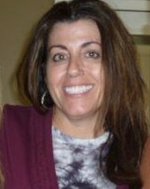Yoga Insights with Victoria Rico
 Monday, March 21, 2011 at 12:00AM |
Monday, March 21, 2011 at 12:00AM |  Kim Eslinger |
Kim Eslinger | Submitted by Victoria Rico
Spotlight on two Minneapolis Yoga Instructors: John Robert Shaw and Inanna Jessup
 John Robert Shaw
John Robert Shaw
John is sincere in saying that the yoga journey has positively influenced many aspects of his life and physical being along with those with whom he has practiced and had the honor to teach. The opportunity to practice and teach Bikram and Corepower yoga is a supreme blessing that continues to and will forever impact his earthly and spiritual existence.
Inanna Jessup
“What I love about teaching yoga is the ability to move energy through a room, and through a community. I love that when people walk through the studio doors, they feel at home. They feel THIS is a part of their day where they can be themselves and take CARE of themselves. It is such an honor to be a part of that experience.”
While the featured yogi have divergent stories, it is interesting that both John and Inanna were initially drawn to Bikram Yoga. The Bikram (Hot Yoga) practice is intense, systematic, evenly paced and meditative. John took a Bikram class looking to refresh his body and mind after over 25 years as a runner, biker, and health club rat.
Inanna, who spent years as a competitive gymnast, found herself in Philadelphia, in fashion design school. After 8 hours hunched over a sewing machine, hot yoga was the perfect holistic medicine for neck and back pain from previous gymnastics injuries. Please look for both John and Inanna on the schedule at CorePower Yoga at 501 Washington Avenue South. To learn more about their extensive teacher training, please look for them on the CorePower Yogawebsite. If you live in the neighborhood please ask about special pricing on yoga classes.
1. What are some common myths about yoga?
JRS: That it’s sitting around legs crossed, chanting and believing in some weird anti-Christ.
That it’s one thing, not a broad base study of life and energy in the Universe.
That hatha (postures) yoga is easy, not hard work.
“I am not flexible” thus, yoga is not for them. Contrary, increased range of motion is one of the goals/benefits of yoga practice.
IJ: Number one- that you have to be flexible. I was a gymnast and a dancer and have always had natural flexibility but it is a daily struggle in my practice to not rely on that flexibility and to find more power and strength. People that walk in with limited flexibility have JUST as much or MORE to gain from a yoga practice.
2. Breath is an integral part of yoga, how difficult is it to learn to breathe in yoga?
JRS: Not difficult at all once the student realizes how cleansing and energizing even small improvements in breathing can be to all aspects of his or her. Yes, it takes practice. Good things aren’t supposed to be handed to you on a silver platter.
IJ: Once you bring your focus to your breath, it is so easy! It is amazing how little attention we pay to such a simple action that in fact keeps us alive. Having power over your breath does not just mean being able to enlarge your lungs or take longer, deeper breaths. It gives you the power to challenge your mind and body in ways that help you in the smallest every day interactions and reactions. It helps you learn to control or channel the fight/flight response that we so naturally adopt in situations of anxiety or stress.
3. Is yoga a mind, body and spiritual practice?
JRS: Even more than that, yoga is life, the study of energy of which mind, body and spirit are just human interpretations. There are eight forms of yoga and eight limbs of yoga. So yoga is more than three dimensional, it is all encompassing.
IJ: Yes. It fluctuates between all three. Some days it is just about the physical. Some days it is simply meditation. Some days you just cannot get out of your busy mind. And on that rare day when everything falls into place, all three come into balance.
4. How did you get started in yoga and when?
JRS: Though I had done two yoga classes at LTF in SLP in 2000, 2001, I finally did my first Bikram class on Jan 30, 2002. This was after +25 years as a runner, biker and health club rat. Classic; I was looking for something different to refresh the body and mind after long days at corp USA. Several club friends extended the invite and the three of us took this very long and very hot class. It was extremely hard but the effects immediate and compelling.
IJ: I started doing yoga when I was very young but did not get fully involved until college, when I began a daily Bikram Yoga practice in Philadelphia. I went to fashion design school and after 8 hours hunched over a sewing machine, hot yoga was the perfect thing for my body, and the only way to manage my neck and back pain from previous gymnastics injuries. When I moved to Minneapolis two years ago, I began practicing at CorePower Yoga and immediately fell in love.
5. How has your practice changed from when you first started practicing yoga?
JRS: My personal practice has evolved very nicely in the last 9 years from being stiff and limited range of motion and low attention space and big ego to a smooth and graceful practitioner with excellent range of motion and incredible focus; for a limited amount of time!
IJ: When I first began, Yoga was all about the physical practice. I had been both a competitive gymnast and a dancer and so how my body acted and reacted was all that was important to me in the yoga studio. After a while though, I began to see the other benefits of my practice manifest- my control of my breath improved and so did my ability to both energize myself and calm myself down in stressful situations. Every class I take is different- sometimes I am still fixated on the physical joy of movement, but sometimes it goes beyond that entirely.
6. Do you incorporate music into your classes? Why or why not?
JRS: Yes, the music can add to the experience in many ways. Quiet, calm, upbeat for certain parts of class, distraction from unwanted thoughts, energy for the entire class and instructor.
IJ: All of our classes at Core Power Yoga have music in them. The atmosphere of a class is so important. I love making new music mixes and discovering new music for my classes because it creates the attitude and inspires my students.
7. What does moving meditation mean?
JRS: My interpretation and personal experience is that through the focus on the breath and the movement of the body in asana isometric postures and moving transitioning asana sequences, the mind, breath, body and spirit become one and join in union with the energy and of the yoga space. It’s a very unique experience and challenging to describe but not that difficult to attain a relative low or mild state of moving meditation. When the room is heated in my opinion, the experience is accelerated and enhanced.
IJ: Yogis sometimes call their Asana (Posture) Practice a moving meditation. What it means is that while the body is active, the mind is able to steady and calm itself- focusing only on the breath. You become an observer of your thoughts and reactions- not attaching yourself to results or outcomes and experiencing your own ego and personal challenges with non-judgment and compassion. That is what moving meditation means to me.
8. What are your favorite books on yoga?
JRS: Anatomy of Hatha Yoga-Coultier, Journey into Power-Baptiste, Bikram Yoga-Bikram Choudhury, Hatha Yoga Illustrated-Boon, Kirk, DiTuro.
IJ: My very favorite book is the Bhagavad Gita. There are a lot of different translations out there that are all wonderful. It is a beautiful story that illustrates some very accessible wisdom about the path to enlightenment, our place in this world, karma, and the meaning of it all.
About Victoria With over 400 hours of teacher's training through CorePower Yoga and the Green Lotus Yoga and Healing Center, Victoria is certified to teach Vinyasa, Yin, Restorative, Hot Yoga, Hot Power Fusion, and Yoga Sculpt. Combining her love of healthy living with yoga and life long learning, Victoria creates yoga classes and workshops to refresh, stimulate and challenge the yoga practitioner. She can be reached at 612-554-7755 or victoria@victoriarico.com



Reader Comments